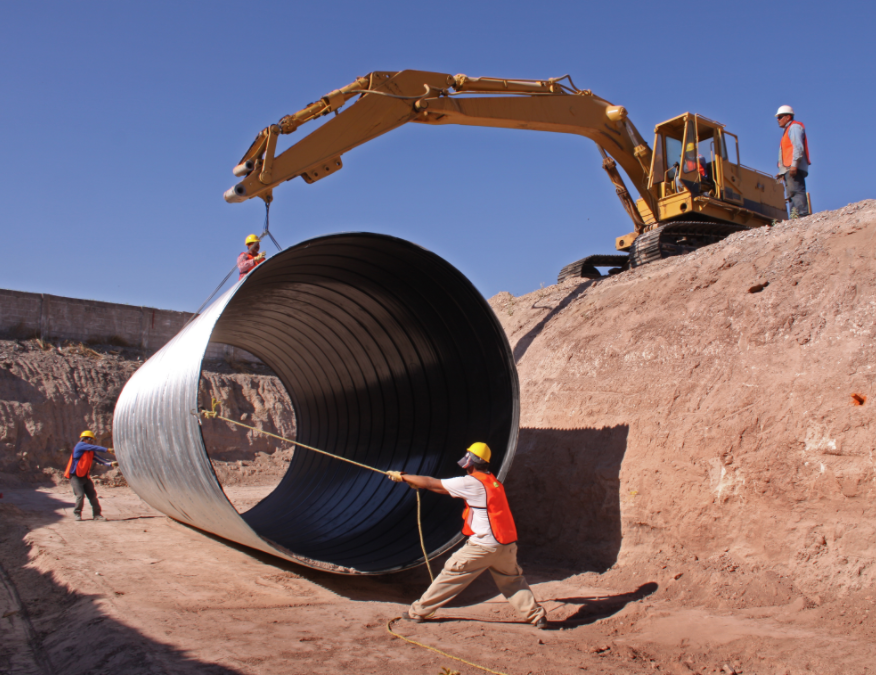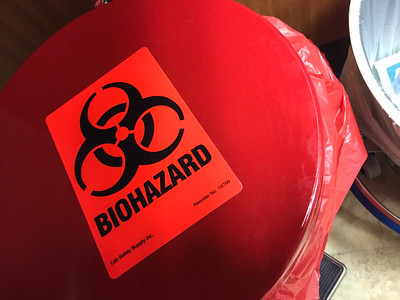Deadliest Jobs: Workplace Deaths in the Construction Industry

Workplace Deaths
We’ve all heard of the ongoing sagas of the fishing fleets featured on Deadliest Catch, and since then, a slew of logging docudramas have popped up, capitalizing on the tension involved with two of the most dangerous industries in the United States. Even less common workplace deaths, such as the Luluemon murder, have garnered significant media attention.
On December 19, 2017, the Bureau of Labor Statistics released its 2016 Census of Fatal Occupational Injuries (CFOI). Once again, the logging and commercial fishing industries led the top position for the percentage of workforce fatalities within their industries, but in terms of hard numbers, construction fatalities account for the most deaths in the private sector.
These industrial accident cleanups are far too common within the bio remediation industry.
Construction’s “Fatal Four”
There isn’t a whole lot about construction that merits the hype and fan following of high-seas commercial fishing or the down-and-dirty draw of hauling timber out of swamps or steep canyons, but in 2016’s fiscal year, the 991 construction-related deaths accounted for 1 in 5 private industry workplace fatalities.
Eliminating the Fatal Four would save 631 workers’ lives in America every year. — OSHA
OSHA has a term for the four leading causes of deaths in the construction industry: “The Fatal Four”.
- Falls, Slips, and Trips: By far the highest danger in the construction workplace, falls account for 384 deaths; that’s 38.7 percent of the total construction fatalities reported that year.
- Struck by Object is a distant second at 93 deaths, or 9.4%.
- Electrocutions, accounting for 82 deaths or 8.3%.
- Caught-in or Caught-Between incidents, including workers being “struck, caught, or crushed in collapsing structure, equipment, or material” (OSHA). This category also accounts for fatalities resulting from workers entangled in equipment, and the caught-in or caught-between fatalities are 72 (7.3%) out of 911 total construction-related deaths
More than half (63.7%) of construction industry deaths are attributed to The “Fatal Four”, and these statistics aren’t matched against work-related highway injuries and fatalities (4,260 total casualties).
Highway vehicles (4,260) like freight hauling trucks and pickups were some of the major sources of accident injuries on construction sites.
The Breakdown on the Upswing
The five most dangerous jobs for two years running (fiscal years 2015 and 2016) are logging, fisheries, aircraft pilots and flight engineers, roofers, and garbage/recycling collectors and workers. Roofers, in fourth place at 48.6 out of 100,000 full-time workers are of course in the construction industry, and as we know, falls are the leading cause of deaths in that category.
The sixth-place spot belongs to structural steel and iron workers, 16 of whom perished on the job in 2016.
The total number of construction worker deaths have steadily increased the past few years. A very small number of construction deaths are the result of true accidents. — Kendall Jones, Construct Connect
What’s responsible for this uptick? Some experts believe substance abuse is behind the spike in workplace industries, which in 2016 were the highest in nearly a decade.
According to a white paper by Scott Howell, MD, Chief Medical Officer for Tenet Diagnostics,
- 70% of the 14.8 million Americans who abuse drugs are employed.
- Up to 20% of work-related fatalities test positive for drugs or alcohol.
The opioid crisis has been in the news for the past several years, and Tenet Diagnostics—a leading drug testing lab—believes that opioids are a major contributor, along with methamphetamine and marijuana, to workplace injuries and fatalities.
Substance misuse rates differ by industry. Though there are no official CDC or BLS data on drug-related casualties, research from the National Safety Council, Shatterproof, and the National Opinion Research Center indicates that construction industries experience a higher-than-average reporting of pain medication and heroin abuse.
Spotlighting Construction Workplace Safety
Safety violations, workplace non-compliance, and the inherent dangers of the industry make construction a contender for its own cable network show. Indeed, we’ve watched crew members of Deadliest Catch battle their addictions, and bring to light the substance abuses in these and other high-risk jobs as they dodge cranes and sneaker waves, get injured by flywheels and falling crab pots, and risk slips, falls, and drowning every day.
But given that most of us know at least one construction worker, we’ve heard stories about heavy equipment accidents, falls, and injuries that kill, injure or maim.
And for construction executives, it’s a constant battle to create safe, healthy workplaces.
We at National Crime Scene Cleanup are all-too-aware of the trauma involved in workplace injuries and deaths. Our nationwide certified team of crime scene cleaners has tended to every type of construction-related fatality, and we understand the challenges workers and executives face in promoting safety awareness programs and in creating and enforcing policies designed to reverse the upward trend reported by the Bureau of Labor Statistics. Because being the deadliest industry shouldn’t be about high viewer ratings and prestige.




